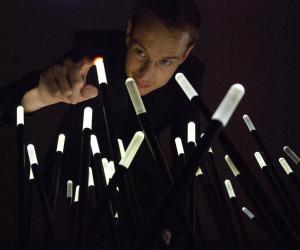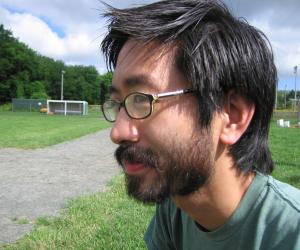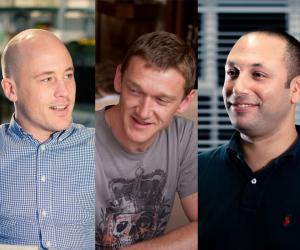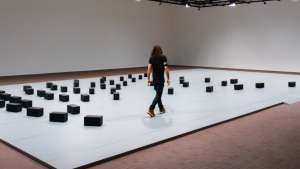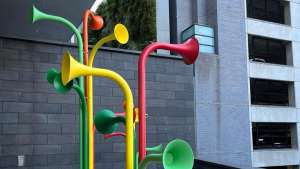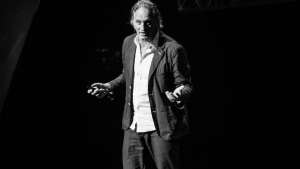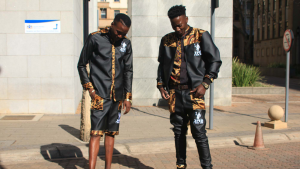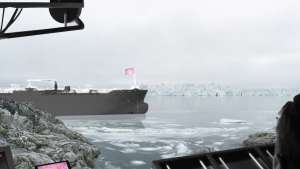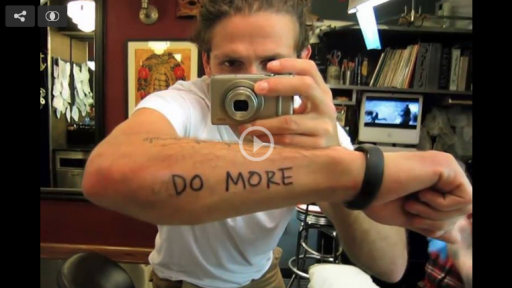Daan Roosegaarde on techno poetry
Artist and inventor Daan Roosegaarde’s work is a form of techno-poetry that happens where innovation and imagination merge. Roosegaarde believes that to effectively deal with certain modern realities we need to renegotiate current protocols. He also talks about how we might personalise and customise the world around us.
What happens when tech jumps out of the screen and becomes a part of the clothes that we wear, or the floor that we dance on, or the roads we participate in. It is about personalising and costuming the worlds around us, and man has always made tools in order to do that. My work is the logical extension of that idea.
Watch the full speaker talk here.
Alex Chen on the possibilities of a line
Alex Chen loves making things and often combines his interest in music (he plays the viola), drawing and coding to make interactive digital works, both as part of his job at Google Creative Lab and in his personal capacity.
Fascinated by the possibilities of a simple line on a page, Chen explored how such a line could be coded to become a string one could reach out and pluck. This quest – exploring the sound of a scribble – resulted in various interactive works like turning the Google logo and the New York Subway system into musical instruments. “It’s about taking a visual source that has no inherent musical value to it and drawing music from it,” he explains. He also flipped this idea on its head by visualising the Bach Cello Suites.
I wanted to take a beautiful piece of music, in this case the Bach Cello Suites, and see if I could draw visuals from that. When you think about the famous cello suites and you are asked to visualise it, most people would probably pick notes on a page but notes on a page are actually just a written language for music. It is a convenient way to pass music around, and conserve it through generations. Is there a more natural way to visual what the Bach Cello suites would look like? What if you could actually see it being performed by nature?
Watch Chen’s full speaker talk here.
UVA on designing for emotional response
United Visual Artists (UVA) are interested in how technology can adapt to basic human interaction and evoke emotion in all people. Their impressive portfolio includes designing stage sets for UK super group Massive Attack, a beat-driven text generator and projects composed of led screen and speakers that react when people get close. The work they did in terms of stage design allowed them to experiment not only with video content and lighting but also sculptural form on stage. Their main priority was always to create emotion and spectacle and this informed their other light and sound installation pieces.
What it all (their stage design) has in common is that there is a lot of technology on the stage and then there is this sharp dividing line and on the other side is you the audience. Over time we became interested in seeing what would happen if we crossed that line, to dissolve that line and let people come onto the stage, so to speak.
Watch UVA’s full speaker talk here.
MIT Senseable City on how cities communicate through digital techonology
Director and associate director, respectively of MIT’s SENSEable City Laboratory, Carlo Ratti and Assaf Biderman explain how cities are slowly but surely beginning to communicate through digital technology. Comparing the environment to real-time control machines, the duo give insight into how digital and the physical merge, giving rise to information on the way people and things move around.
We believe an incredible thing is happening in our cities today; they are becoming real-time control systems. We’re covered and layered with so many networks, sensors, other types of systems and digital layers, and because of that it is almost as if the digital and physical layers are becoming the same thing. As a result of this convergence of the physical and the digital, we believe our environment is starting to talk back to us.
Watch the full speaker talk here.

